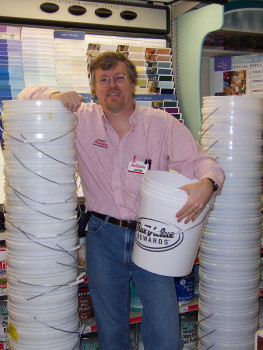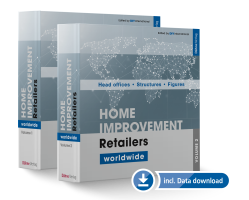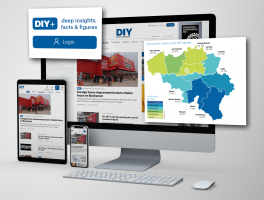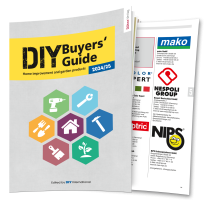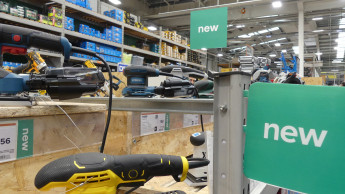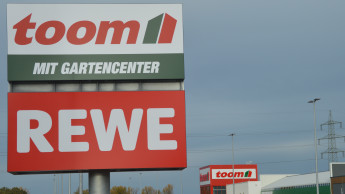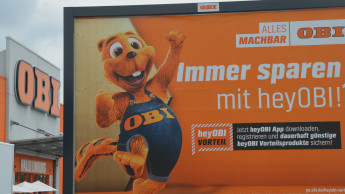For a number of years, American hardware and home center retailers have been conducting a certain type of sale that has proven very successful
Discounts vary by dealers - some offer as little as 15 per cent, others a discount of as much as 25 per cent. Dealers do sometimes put some restrictions on what can be put into the bag or bucket - such as items already being sold at a sale price.
When retailers use paper bags, they have them imprinted with a huge discount percentage, plus any restrictions that might be imposed, and, of course, in large type, the store’s name, address and sometimes phone number. The bags can be distributed via newspapers or customers can pick them up in the store.
Menards, America’s third largest home center chain, a privately owned firm with 200+ units, used this paper bag promotion for a five-day period in September, offering a 15 per cent discount.
Another retailer who has used this idea several times is John Fix III, owner of Cornell’s True Value Hardware in Eastchester, NY, a suburb north of New York City. In his case, he gave each coupon-redeeming customer a free white plastic bucket in which they could put the items they selected to earn the discount. He limited the exceptions to his discount offer to just two categories - power tools, which have short margins to begin with, and items already on sale.
Because he is fully computerized, Fix has been able to track the sales results and his experience could help readers determine if they should try this idea, too.
While some dealers print their sale-price discount on paper bags distributed with local newspapers, thus reaching every subscriber in the marketplace, Fix chose to limit his promotion by mailing a coupon to the top 30 per cent of customers using his Customer Reward cards. These, he has found, account for about 70 per cent of the total sales volume he gets from nearly 10 000 Reward cards he has issued.
The sale can be run for a one-day period or over a weekend, but Fix chose to make it a 4-week sale, beginning 26 September and expiring 22 October.
He mailed 3 200 coupons out and had 454 redemptions, with an average transaction of US $ 45.62. The sale generated gross sales among those customers of more than US $ 20 000 in the 4-week period.
He also ran the sale in May of 2005, and had similar results with a 12 per cent redemption and a slightly higher average sale of US $ 47.85. Here are weekly results of the fall promotion:
Week 1 - 87 redemptionsWeek 2 - 129 redemptionsWeek 3 - 101 redemptionsWeek 4 - 133 redemptionsBeing very analytical, Fix studied the impact of the sale on his regular gross margins, and finds that of the 454 bucket sales, only 32 had a negative gross margin, and the sales for those averaged only US $ 9.75, meaning that those customers bought only one or two low-priced items in order to get their free bucket.
On the positive side, 114 of the sales produced a gross margin of 35 per cent after the discount and those sales averaged US $71.06. Overall, the sale did not disturb his normal storewide gross margins.
There was no mention of the bucket sale in-store. There was a stack of buckets near the front door but no other indication that anything special was going on. He said they did not provide coupons to customers who asked, unless someone said they lost their coupon. In that situation, employees verified that they were a top customer and gave them the bucket deal.
He further explained, ”I dislike in-store offers that are given to anyone who happens to wander into the store that day. Those ‘walk-ins’ are ready and willing to pay full price for their needs so why disappoint them?” At the time of the bucket sale, he said the store had about 50 items on sale and they all required True Value Rewards membership to get the pricing.
”I'm sending to my best customers in order to maximize the impact of my advertising dollars,” he explains. ”I want to give the best prices and best offers to my best customers. If the mailing was free, I might have mailed to a wider selection of customer.”
He finds this type of sale increases his normal store traffic, but says the most interesting aspect is that customers walk through the store carrying their buckets - checking his stock thoroughly to see what they might want to buy and fit into the bucket.
“They never browse so thoroughly on their own,” he says. He can’t be sure but he strongly suspects the average shopping visit is considerably longer than a normal shopping trip to his store.
From the customers’ viewpoint, this sale idea is attractive, he adds, “Because it offers customers a lot of flexibility. They choose when to shop and what to purchase.”
He also likes it because he does not have to stock up on a few dozen featured items from his wholesaler’s advertising circular. Purchases are made from regular stock being sold at regular prices, less the announced bucket or bag discount.
”We also did a mailing to 100 per cent of our customers with the True Value regional group and I'm interested to see what the response rate was by customer category, as I find that mailing to the ‘bottom feeders’ is not very productive. Not only do they respond poorly to offers, but they tend to cherry-pick the items so even when they do come in to shop, the margins on their purchases are much lower than with our top customers. Once the last part of the regional mailing offer is completed (a 50 per cent off coupon for 5 November), I'll know the results for that mailing to the whole list and know if my analysis of customer response is accurate.”
There’s another advantage to his bucket sale, he says. The buckets he gives out free when they bring in the coupon for redemption are imprinted with a big True Value logo on one side and his store information (name, phone, address) on the other.
“It’s always helpful to have our store name in a customer’s garage, workshop or basement where they and others are sure to see it day after day.”
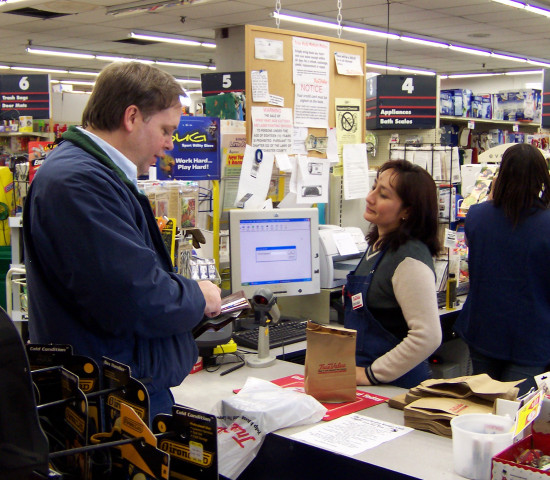
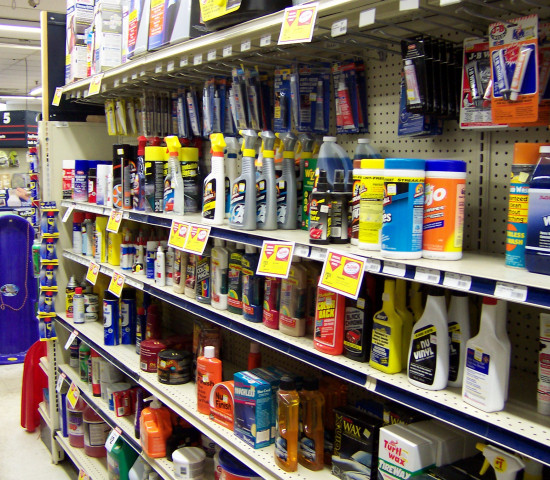

 Menü
Menü




